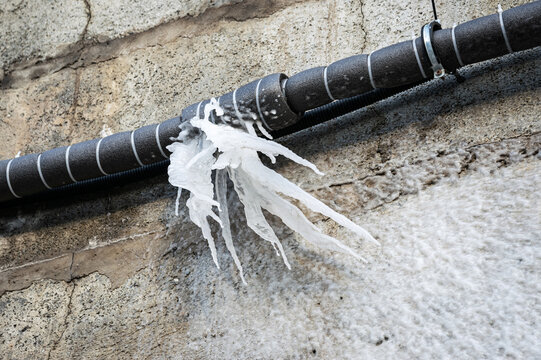Avoiding Frozen Plumbing: Best Methods for Cold Weather
Avoiding Frozen Plumbing: Best Methods for Cold Weather
Blog Article
We've found this article relating to Prevent Frozen Pipes down the page on the internet and felt it made perfect sense to talk about it with you on this site.

Cold weather can ruin your plumbing, especially by freezing pipes. Below's how to avoid it from occurring and what to do if it does.
Intro
As temperature levels decline, the risk of icy pipes boosts, possibly causing costly repair services and water damages. Comprehending just how to prevent icy pipelines is important for homeowners in chilly environments.
Recognizing Frozen Pipes
What triggers pipelines to ice up?
Pipelines ice up when exposed to temperature levels listed below 32 ° F (0 ° C) for expanded durations. As water inside the pipelines ices up, it increases, taxing the pipeline wall surfaces and possibly creating them to rupture.
Dangers and damages
Frozen pipes can lead to supply of water disruptions, residential property damage, and pricey fixings. Burst pipes can flooding homes and trigger substantial structural damages.
Indications of Frozen Piping
Identifying icy pipes early can stop them from rupturing.
How to determine frozen pipelines
Look for lowered water flow from faucets, unusual odors or sounds from pipelines, and noticeable frost on exposed pipelines.
Avoidance Tips
Protecting vulnerable pipes
Cover pipes in insulation sleeves or make use of heat tape to safeguard them from freezing temperature levels. Focus on pipes in unheated or outside areas of the home.
Home heating techniques
Maintain interior rooms properly heated, particularly areas with pipes. Open cabinet doors to permit cozy air to flow around pipelines under sinks.
Shielding Outside Pipes
Garden tubes and exterior taps
Separate and drain pipes garden hose pipes before winter. Mount frost-proof spigots or cover outdoor taps with protected caps.
What to Do If Your Pipes Freeze
Immediate activities to take
If you presume icy pipelines, keep faucets open to relieve stress as the ice thaws. Utilize a hairdryer or towels soaked in warm water to thaw pipes gradually.
Long-Term Solutions
Structural changes
Think about rerouting pipes far from exterior walls or unheated locations. Add added insulation to attics, cellars, and crawl spaces.
Upgrading insulation
Purchase top quality insulation for pipelines, attics, and walls. Proper insulation aids keep consistent temperatures and reduces the danger of icy pipes.
Conclusion
Preventing icy pipelines calls for positive steps and quick feedbacks. By understanding the reasons, indicators, and safety nets, homeowners can protect their plumbing during winter.
5 Ways to Prevent Frozen Pipes
Drain Outdoor Faucets and Disconnect Hoses
First, close the shut-off valve that controls the flow of water in the pipe to your outdoor faucet. Then, head outside to disconnect and drain your hose and open the outdoor faucet to allow the water to completely drain out of the line. Turn off the faucet when done. Finally, head back to the shut-off valve and drain the remaining water inside the pipe into a bucket or container. Additionally, if you have a home irrigation system, you should consider hiring an expert to clear the system of water each year.
Insulate Pipes
One of the best and most cost-effective methods for preventing frozen water pipes is to wrap your pipes with insulation. This is especially important for areas in your home that aren’t exposed to heat, such as an attic. We suggest using foam sleeves, which can typically be found at your local hardware store.
Keep Heat Running at 65
Your pipes are located inside your walls, and the temperature there is much colder than the rest of the house. To prevent your pipes from freezing, The Insurance Information Institute suggests that you keep your home heated to at least 65 degrees, even when traveling. You may want to invest in smart devices that can keep an eye on the temperature in your home while you’re away.
Leave Water Dripping
Moving water — even a small trickle — can prevent ice from forming inside your pipes. When freezing temps are imminent, start a drip of water from all faucets that serve exposed pipes. Leaving a few faucets running will also help relieve pressure inside the pipes and help prevent a rupture if the water inside freezes.
Open Cupboard Doors
Warm your kitchen and bathroom pipes by opening cupboards and vanities. You should also leave your interior doors ajar to help warm air circulate evenly throughout your home.

As a keen reader on Prevent Frozen Pipes , I assumed sharing that short article was worth the trouble. So long as you enjoyed our article please do not forget to share it. I praise you for being here. Come back soon.
Recurring Service Plans Report this page